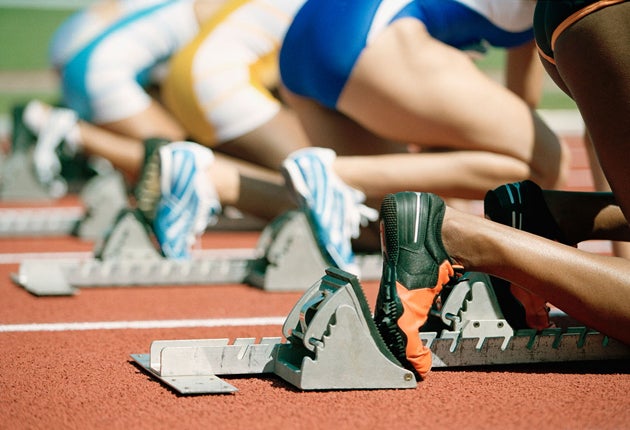Games up: Olympic blood cheats to face new test

Your support helps us to tell the story
From reproductive rights to climate change to Big Tech, The Independent is on the ground when the story is developing. Whether it's investigating the financials of Elon Musk's pro-Trump PAC or producing our latest documentary, 'The A Word', which shines a light on the American women fighting for reproductive rights, we know how important it is to parse out the facts from the messaging.
At such a critical moment in US history, we need reporters on the ground. Your donation allows us to keep sending journalists to speak to both sides of the story.
The Independent is trusted by Americans across the entire political spectrum. And unlike many other quality news outlets, we choose not to lock Americans out of our reporting and analysis with paywalls. We believe quality journalism should be available to everyone, paid for by those who can afford it.
Your support makes all the difference.Athletes who illicitly store their own blood for transfusion back into their bodies immediately before an event could find themselves being disqualified at the 2012 Olympics with the help of a new anti-doping test.
Experts dropped heavy hints yesterday that the first test to detect "autologous" blood transplants – transfusions taken from and given back to the same individual – will be ready for the London games next year.
In the past, anti-doping authorities have refused to confirm whether or when such a test will be ready to be introduced, in the hope that the uncertainty will deter any athletes who may be considering autologous transfusions. However, rapid advances in analytical techniques has made it possible to detect red blood cells that have been stored outside the body prior to being transplanted back into the same individual, said Professor David Cowan, director of the Drug Control Centre at King's College London.
Autologous blood transfusions, which can significantly boost an athlete's performance by given them extra oxygen-carrying red cells, are one of the few methods of cheating in sport that cannot be detected by current scientific tests. The few cases of it occurring in the past, such as at the 2006 Winter Olympics in Turin, have been detected by old-fashioned investigations involving searches of a competitor's quarters for illicit transfusion paraphernalia.
However, Professor Cowan said that rapid advances, centred on the RNA molecules naturally present in red blood cells, have led to the real possibility of validating a reliable test in time for London 2012.
"I would like to get it in on time, but I cannot guarantee that it will be ready. But if we do... it will be sufficiently reliable to accuse an athlete, that's the key," Professor Cowan told the British Science Festival at Bradford University. "It's quite exciting times, a lot of things are happening at the moment.
"But we are not going to say when a test will be ready to work because what we want is to get the message out there that science is capable of detecting cheats. We want to deter people using drugs."
Boosting levels of red blood cells is known to be particularly beneficial in endurance sports that rely on stamina. Controlled trials of autologous blood transfusions on cross-country skiers, for instance, have demonstrated marked improvements in speed.
A test to detect "homologous" blood transfusions from other donors has been used by the World Anti-Doping Agency since 2000. It is based on a machine that can detect differences in antigens on the membranes of red cells, which shows whether an athlete has someone else's blood in theirs.
However, this method does not work when detecting an athlete's own blood transfusion. The new technique centres on a "gene chip" that can detect changes to the RNA molecule of red blood cells that indicate whether it has been stored outside the body.
"As the cell ages outside the body, the pattern of the RNA varies, and by using chip technology to look at these RNAs, you can say that there is a different pattern," Professor Cowan said.
A reliable test for autologous blood transfusions would fill one of the last big gaps in anti-doping technology. Other tests are already well-developed to detect the use of growth hormone or the new class of "gene-doping" drugs based on injections of DNA.
"We may not be doing as well as we like, and we can improve on it. But there are very few gaps remaining. The main ones are where we take something out [of the body] and put it back again," Professor Cowan said.
Join our commenting forum
Join thought-provoking conversations, follow other Independent readers and see their replies
Comments